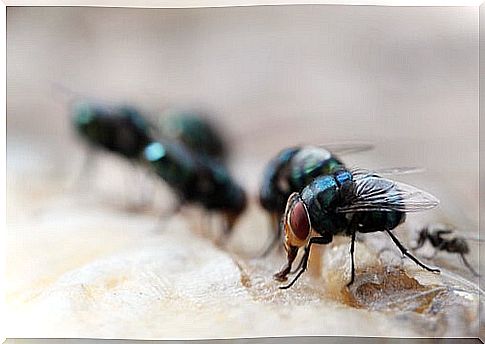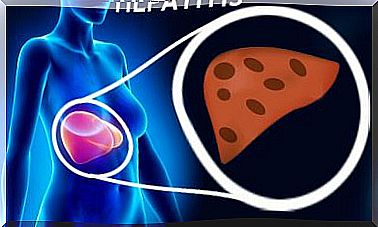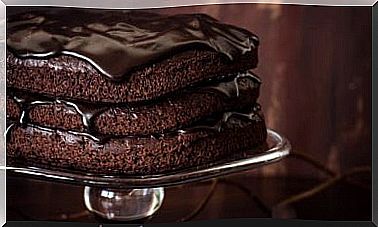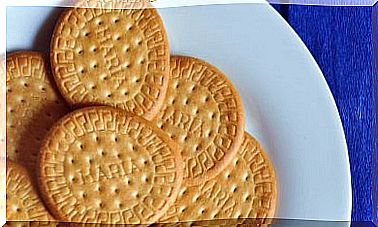What Happens When An Insect Lands On Food?
We are about to enjoy our favorite dish and suddenly we see how a horrible insect lands on the puree or soup with impunity. And what do we do? We kick him out with a simple wave of the hands!
Then, of course, we start eating because we are famished. Is that decision correct? What happens if an insect comes into contact with food? In this article we will tell you about it.
Flies in food
Few things are as unpleasant as seeing flies prowling the garbage. No matter how cruel we are against them, we apply repellent or we scare them with a stick, we will not finish them off. Of course, at least we will avoid being disturbed at home.

Flies belong to the Diptera family, which has no less than 165,000 species. The one that bothers us when we want to eat or is flying around us in the kitchen or bathroom is called “domestic and minority”.
And it is the most unpleasant because it grows and feeds on feces, waste and putrefaction. That furry little one with wings and bulging eyes loves rotting things. And not only that, it has the ability to carry many pathogens in its legs and body.
According to a pest control company, it can accumulate up to 5 million bacteria on the limbs. So when it lands on anything (from our food to our arm) it can spread them in a millisecond.
When is it dangerous for a fly or insect to touch food?

You are sitting at the table about to eat a delicious piece of meat. We see how a fly leans on food as if nothing. We scare her away and… do we eat? You can apply the “nothing will happen to me” technique and continue with your dinner. This can be so as long as the food is cooked.
Biologists and doctors say that the problem lies in the contact of microbes with ingredients that are raw (for example, in a lettuce and tomato salad). This is because bacteria find the necessary conditions to be able to reproduce.
The same happens if we leave food on the table or on the counter. If we are beating an egg and an insect lands in the liquid, it is recommended to discard it and use a new one.
In the case of fruits, the sugar they contain delays the development of microorganisms. In turn, those bacteria that are raised are not harmful to health (something that does not happen in raw meat, chicken or fish at room temperature).
What happens if I eat the “infected” food?
Flies are dirty, no one can deny that. And no matter how much we do our best to eliminate them and throw them out of the house, they always come back. Despite all the precautionary measures we take, this insect can transmit microbes that, in the end, we will end up ingesting.

However, don’t get paranoid. The body has defense mechanisms with sufficient capacity to destroy them. This happens in the vast majority of cases.
Bacteria that are “stubborn”, or that the body does not know or cannot control, can cause minor ailments, such as stomach or intestinal discomfort.
Now, that does not mean that for this reason we should let the flies fly at ease throughout the kitchen. If one or more insects land on food and the correct hygiene measures are not taken, we can catch some of these diseases :
- Salmonella
- Intestinal worms
- Typhus
- Anger
- Anthrax
The fly itself is not dangerous, but we must not let it do what it wants. The hygiene and aseptic conditions of the home must also be taken into account. If dirt is everywhere it is easier for pathogens to be transported and for them to develop without problems.
This can be avoided by taking out the trash daily, not leaving raw meat out of the fridge, and keeping pets out of the kitchen. It is also advisable to wash the kitchen floor every day and the dishes before going to sleep.
Understand flies

This very small insect can transmit up to 100 different pathogens. In addition, it has the ability to adapt to almost any environment (except for cold climates, which is why flies are more frequent in summer).
They frequent waste, sewage, and animal and human excrement. They feed on materials in good condition or rotting. And their great sense of smell allows them to detect the smell of organic matter when it is decomposing at a great distance.
The house fly is only 10% of the total population of this insect worldwide. The others do not mess with our garbage or our waste. But they are not interested in visiting us either. And they are more common in the countryside than in the city.
You should know that the only “harmful” fly is the black one (which usually frequents excrement and garbage). Those of other colors such as, for example, green are not dangerous to our health.
And finally a reference to another hated insect: cockroaches. They are arguably “better” than flies, as they do not feed on rotten things and do not transmit pathogens.








